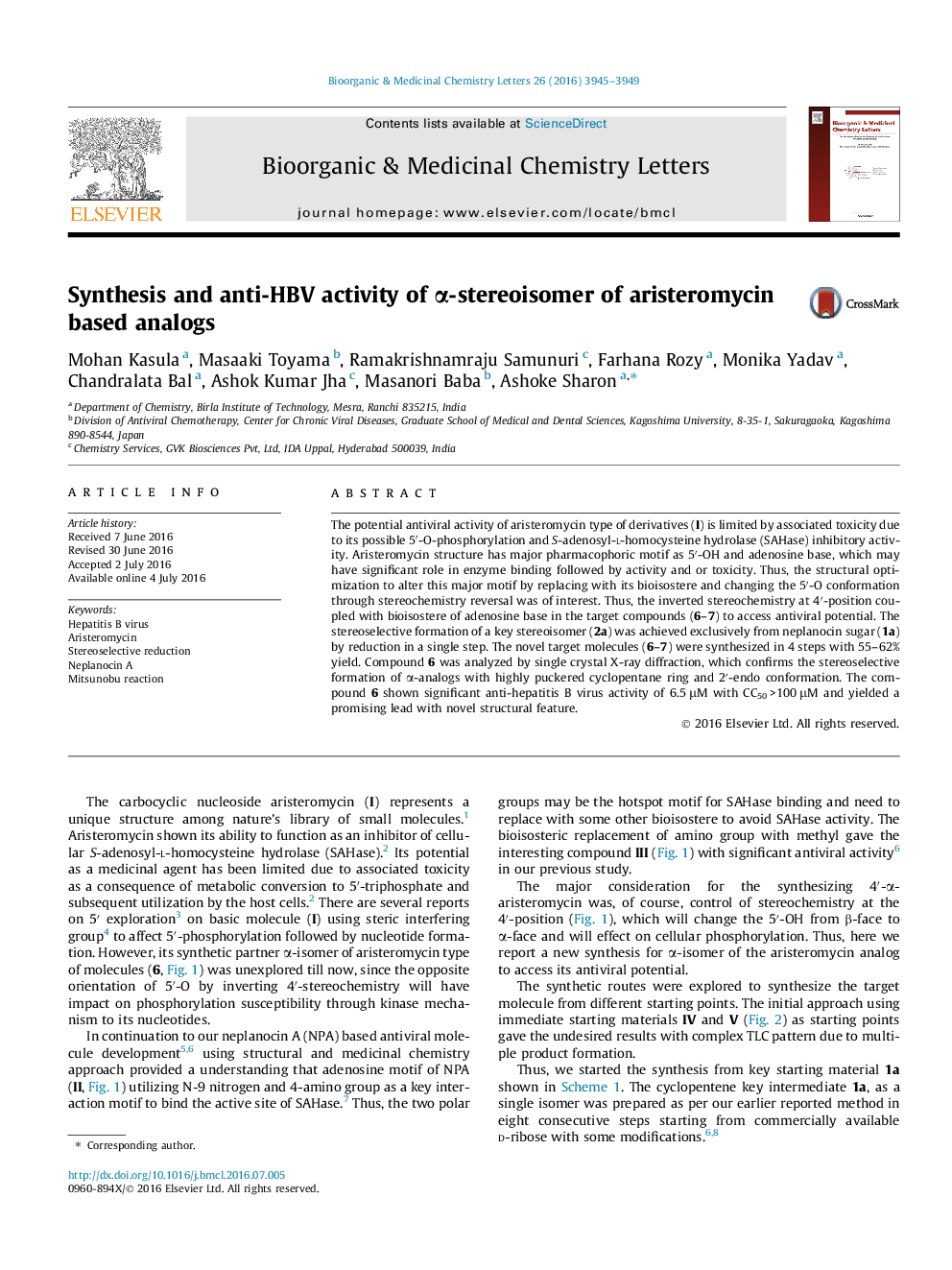| Article ID | Journal | Published Year | Pages | File Type |
|---|---|---|---|---|
| 1369724 | Bioorganic & Medicinal Chemistry Letters | 2016 | 5 Pages |
•Stereochemistry reversal at 4′-position yielded new anti-HBV lead scaffold 6.•Stereospecific reduction through β-face by Pd-C/H2 yielded novel compound 2a.•6 shown promising anti-HBV activity with EC50 = 6.5 μM with CC50 >100 μM.
The potential antiviral activity of aristeromycin type of derivatives (I) is limited by associated toxicity due to its possible 5′-O-phosphorylation and S-adenosyl-l-homocysteine hydrolase (SAHase) inhibitory activity. Aristeromycin structure has major pharmacophoric motif as 5′-OH and adenosine base, which may have significant role in enzyme binding followed by activity and or toxicity. Thus, the structural optimization to alter this major motif by replacing with its bioisostere and changing the 5′-O conformation through stereochemistry reversal was of interest. Thus, the inverted stereochemistry at 4′-position coupled with bioisostere of adenosine base in the target compounds (6–7) to access antiviral potential. The stereoselective formation of a key stereoisomer (2a) was achieved exclusively from neplanocin sugar (1a) by reduction in a single step. The novel target molecules (6–7) were synthesized in 4 steps with 55–62% yield. Compound 6 was analyzed by single crystal X-ray diffraction, which confirms the stereoselective formation of α-analogs with highly puckered cyclopentane ring and 2′-endo conformation. The compound 6 shown significant anti-hepatitis B virus activity of 6.5 μM with CC50 >100 μM and yielded a promising lead with novel structural feature.
Graphical abstractFigure optionsDownload full-size imageDownload as PowerPoint slide
